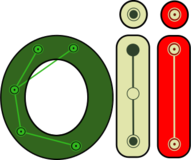
For the second time, the Italian national contest (valid for the selection of the Italian IOI team) will be mirrored into an online contest. The contest is primarily intended for high school contestants, but everyone is welcome to participate!
The contest timing will be USACO-like: it will be open for 24 hours but you will be able to compete for up to 5 hours (you can decide when to "start" your time window, after the login). Participation will be available upon registration to the Italian trainings website (localized also in english).
1. The problem statements will be available in both English and Italian.
2. The time window will start on 2017 September 15th, 10:00 CEST and will end on 2017 September 16th, 10:00 CEST.
3. Tasks will be IOI-like (with graders) and you will have 5 hours to solve them.
4. The languages allowed are: C, C++.
Note: you can decide when to start your 5 hour time window, but remember that the contest will end at 10:00 CEST regardless of your time window!
If you want to participate, you must:
- Visit the training website: https://training.olinfo.it (note that the URL was updated since last year)
- Click "Sign up" (if you haven't already done it last year!)
- Fill out the form and then confirm
- Visit the contest list: https://training.olinfo.it/contests
- Click on the OII 2017 National contest list entry
- Log in with the same username and password you used to sign up
- If the login is successful you will be ready to participate, just wait for the contest to start! (And maybe save the page in your bookmarks, so that you can quickly get back to it when the contest begins)
- When the contest starts, you will see a red button. Click it when you want to start your 5 hour time window!
- Good luck and have fun!
Ranking
The ranking for the national contest will be available here when the contest ends (now it just shows a 404).











